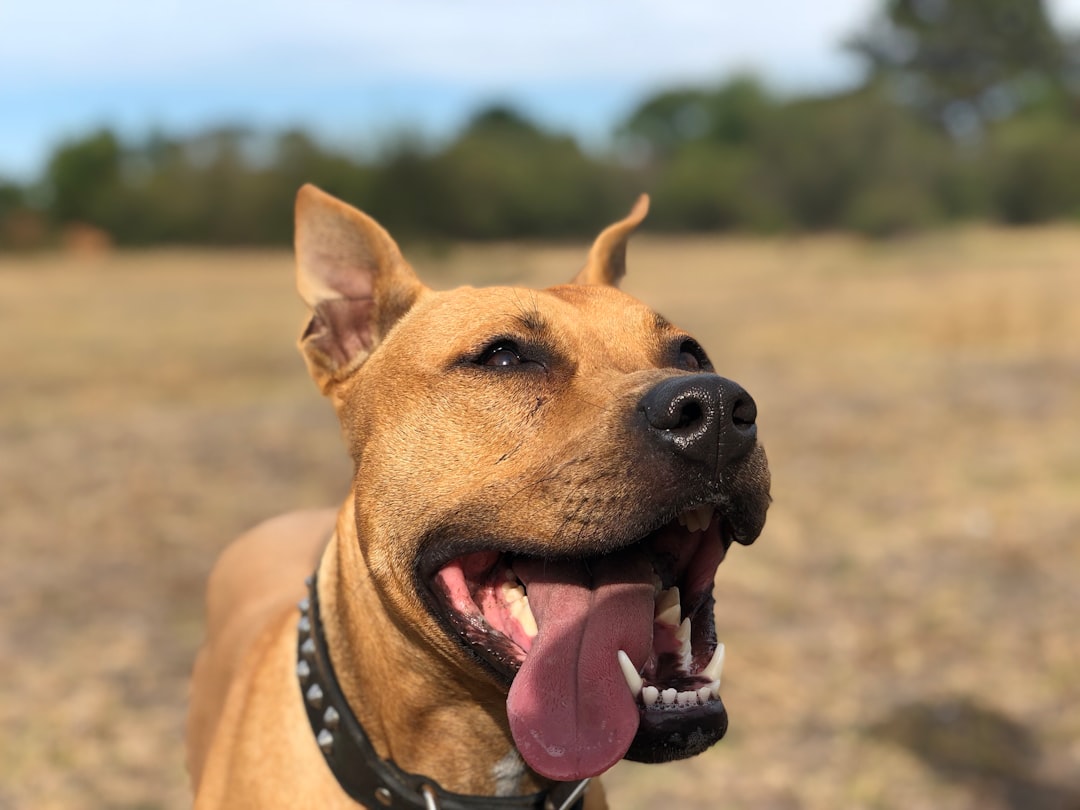If you’ve ever found a surprise in your dog’s business that looks like something straight out of a horror movie, you’re not alone. Bloody stool in dogs can be alarming, but knowing what’s at play can help you keep your furry friend healthy and happy. From dietary indiscretions to underlying health issues, the causes vary widely, as do the circumstances that call for a vet’s intervention. So, grab that leash and get ready to learn how to decode those ‘bloody’ signals from your pup!
Understanding Bloody Stool in Dogs

Ah, the joys of being a dog owner! You get love, loyalty, and sometimes—gasp—bloody surprises on your floor. When it comes to bloody stool in dogs, it’s crucial to act swiftly and not just hope it’s a one-time thing.
Why Blood in Stool is No Laughing Matter:
- Visibility: Blood may appear as bright red streaks or dark, tar-like clots.
- Underlying Issues: This can indicate anything from minor irritations to serious health concerns.
- Types of Blood:
- Hematochezia: Bright red blood signals a lower GI tract issue (e.g., rectum, colon).
- Melena: Dark, tarry stools point to upper GI problems (e.g., stomach, intestines).
Knowing that a dog’s doo-doo can reveal crucial health information can make you a resident poop detective! So, stay alert and understand that bloody stool in dogs is a signal to take action and protect your furry friend.
Common Causes of Blood in Dog Stool

Finding bloody stool in dogs can send any pet owner into a tailspin. But fear not! Knowing the common culprits can make you feel less like a worried parent and more like a well-informed pet detective. Here’s a breakdown of potential causes:
- Parasites: Worms like hookworms or whipworms can cause quite a ruckus in your dog’s digestive system, leading to bleeding.
- Infections: Bacterial or viral infections, such as parvovirus, can lead to bloody stools. They tend to party in your pet’s gut—sort of like uninvited guests!
- Injuries: Accidental damage from eating sharp objects can lacerate the intestines, resulting in a dramatic display of blood.
- Gastric Ulcers: Just like in humans, ulcers in dogs can bleed—though they’re less likely to complain about the pain.
- Cancer: Unfortunately, tumors in the gastrointestinal tract can cause bloody stools as well.
Key Takeaway: If you spot bloody stool in dogs, keep this list handy. While some causes are minor, many require a trip to the vet. Stay vigilant and keep your furry friend happy and healthy!
Symptoms Accompanying Bloody Stool in Dogs

When you discover bloody stool in dogs, it’s crucial to keep an eye out for accompanying symptoms, as they can give you a clearer picture of your furry friend’s condition. Here’s a handy list of symptoms that might appear alongside that alarming red flag:
- Vomiting: Frequent or persistent vomiting can indicate underlying issues.
- Diarrhea: Watch for changes in your dog’s bathroom habits—runny poop can be a sidekick to bloody stool.
- Lethargy: If your pup’s energy levels plummet, it’s time to investigate further.
- Loss of Appetite: A sudden disinterest in meals can signal trouble.
- Abdominal Pain: Keep an eye on any signs of discomfort, like whining or unusual postures.
Quick Comparison of Symptoms
| Symptom | Possible Causes | Urgency Level |
|---|---|---|
| Vomiting | Infection, Poisoning | High |
| Diarrhea | Dietary Issues, Parasites | High |
| Lethargy | Anemia, Dehydration | Medium |
| Loss of Appetite | Illness, Stress | Medium |
| Abdominal Pain | Gastritis, Intestinal Obstruction | High |
If your beloved pooch experiences bloody stool in dogs along with any of these symptoms, don’t wait—contact your vet right away. Timely diagnosis can make all the difference!
When to Seek Veterinary Care
Not all heroes wear capes; some are just responsible pet owners. If you spot bloody stool in dogs, it’s time to channel your inner superhero and act swiftly. Here’s when to sprint to the vet:
- Immediate Action: If the blood appears fresh and bright red, that’s a signal to grab the leash and go.
- If Your Dog Shows More Symptoms: Look out for:
- Vomiting
- Lethargy
- Loss of appetite
- Diarrhea (that’s not a party invite, by the way)
- Duration: If you see blood in your dog’s stool for more than 24 hours, don’t wait for a miracle. Get that appointment!
- Preexisting Conditions: Dogs with conditions like IBD (Inflammatory Bowel Disease) or clotting disorders require extra vigilance.
Remember, when it comes to figuring out the cause of bloody stool in dogs, the earlier you act, the better the outcome. Procrastination may mean trouble – and that’s not a fun adventure for anyone! 🐶✨
Diagnostic Procedures for Bloody Stool in Dogs
When your furry friend leaves you a surprise that resembles a crime scene, it’s essential to act swiftly. Bloody stool in dogs can indicate various issues, from minor mishaps to serious health concerns. Therefore, your veterinarian will likely perform several diagnostic procedures to nail down the root cause. Here’s what may be in store:
- Physical Examination: Your vet will give your pooch a thorough once-over. They’ll check for any signs of distress, dehydration, or abdominal pain.
- Fecal Analysis: Expect a sample of your dog’s stool to be examined for parasites, bacteria, or abnormalities. This step is crucial, as parasites are often the classic culprits.
- Blood Tests: A Complete Blood Count (CBC) and serum biochemistry panel can reveal anemia, infection, or organ issues linked to blood loss.
- Imaging: X-rays or ultrasounds can help visualize your dog’s internal organs to check for obstructions, masses, or structural issues.
Comparing the procedures entails understanding that while a simple fecal analysis can suffice for minor cases, more intensive methods like imaging scans may be necessary for complex conditions. In short, the sooner you start this journey, the better the outcomes when dealing with bloody stool in dogs!
Treatment Options for Affected Dogs
When it comes to addressing bloody stool in dogs, the approach can vary wildly depending on the underlying cause. Let’s break down some common treatment options that could put your furry friend back on the path to tail-wagging good health:
- Dietary Changes:
- Sometimes, simply swapping out the kibble for a bland diet can help your pup recover. Think rice and boiled chicken—yum?
- Medications:
- Anti-inflammatory drugs
- Antibiotics for bacterial infections
- Dewormers, if parasites are the culprits
- Hydration:
- Ensuring your dog stays hydrated is critical, especially if they experience diarrhea. Consider giving them electrolyte solutions specifically designed for pets.
- Surgery:
- In extreme cases, especially with obstructions or tumors, surgical intervention may be nötig. No one likes a surgical pup, but sometimes it’s the best option!
Quick Comparison of Treatments:
| Treatment Type | Description | When Used |
|---|---|---|
| Dietary Changes | Boiled chicken and rice to soothe the digestive system | Mild cases of gastrointestinal upset |
| Medications | Antibiotics, anti-inflammatories, or dewormers | Infections or to eliminate parasites |
| Hydration Solutions | Electrolytes for pets | Prevent dehydration from diarrhea |
| Surgery | Corrective procedures for serious issues | Obstructions, tumors, severe disorders |
Remember, never attempt to diagnose or treat bloody stool in dogs on your own. Consulting your vet ensures the right care path for your beloved pooch!
Preventive Measures to Avoid Bloody Stool in Dogs
Prevention is always better than a cure—especially when it comes to our furry friends! Keeping an eye on your dog’s health can go a long way in avoiding the dreaded bloody stool in dogs. Here are some simple yet effective measures to keep those pants clean:
- Balanced Diet:
- Choose high-quality dog food to avoid gastrointestinal irritations.
- Grapes, chocolate, and onions? No, thank you! Keep them out of paws reach.
- Routine Vet Visits:
- Regular check-ups can catch potential issues before they become serious.
- Get vaccinations and parasite control on schedule.
- Hydration is Key:
- Always have fresh water available; dehydration can worsen intestinal problems.
- Watch for Allergies:
- Monitor any food changes for allergic reactions—stool may not like it either!
- Regular Exercise:
- Keep your dog active. Movement aids in digestion and helps prevent constipation and related issues.
By following these preventive strategies, you’ll not only reduce the risk of bloody stool in dogs but also contribute to a happier and healthier pup!
The Importance of Regular Vet Check-ups
Regular veterinary check-ups are essential for keeping your furry friend healthy and happy—particularly when it comes to keeping an eye out for bloody stool in dogs. Here’s why you should prioritize those appointments:
- Early Detection is Key: Many underlying issues that cause bloody stool can fly under the radar. A quick check-up can help catch these conditions before they escalate.
- Preventive Care: Routine vet visits often include vaccinations, deworming, and nutritional advice all aimed at keeping your pooch in tip-top shape. Remember, prevention is better than a cure!
- Monitoring Changes: Your vet can help you spot any unusual changes in your dog’s behavior, appetite, or elimination, which could indicate a problem brewing.
- Tailored Health Plans: Each dog is unique! Regular check-ups allow your vet to create and adjust a health plan that suits your dog’s specific needs.
In summary, don’t wait until you see bloody stool in dogs to visit the vet. Think of it as a scheduled spa day—because who doesn’t want their buddy to feel great every single day? 🐾
Frequently Asked Questions
What could cause my dog to have bloody stool?
Ah, the conundrum of crimson stools! Your furry friend might be suffering from a buffet of potential issues, ranging from benign to downright alarming. Some common causes include dietary indiscretion (yes, that half-eaten sock might have played a role), parasites, bacterial infections, or even intestinal inflammatory diseases. More severe conditions could be underlying, such as tumors or poisoning. Whatever the reason, it’s not a sight to take lightly!
When should I take my dog to the vet for bloody stool?
If your pup’s poop is sporting a hue that looks like it’s been dipped in paint, it’s high time to ring up your vet! While a one-off incident might not spell disaster, any recurring episodes, especially accompanied by lethargy, vomiting, or loss of appetite, should escalate your concern. Even if your pooch seems fine but the blood persists, better safe than sorry; an ounce of prevention is worth a pound of cure!
Can stress cause bloody stool in dogs?
Absolutely! Dogs can be as sensitive as a soap opera star. Stressors like changes in their environment, new pets, or even loud noises can lead to gastrointestinal upset. This may cause bloody stools if their system revolts, but it’s critical to rule out other medical issues first. So, while Fido may be having a rough day, you want to ensure his insides are doing okay too!
What are the treatments for bloody stool in dogs?
Treatments can vary as wildly as your dog’s whims! It largely hinges on the root cause. If it’s something minor, your vet may recommend a bland diet or medications to calm the stomach. However, more serious conditions could require antibiotics or other interventions, potentially including surgery. Always have a chat with your vet, as self-diagnosis can lead to a tail-chasing debacle!



